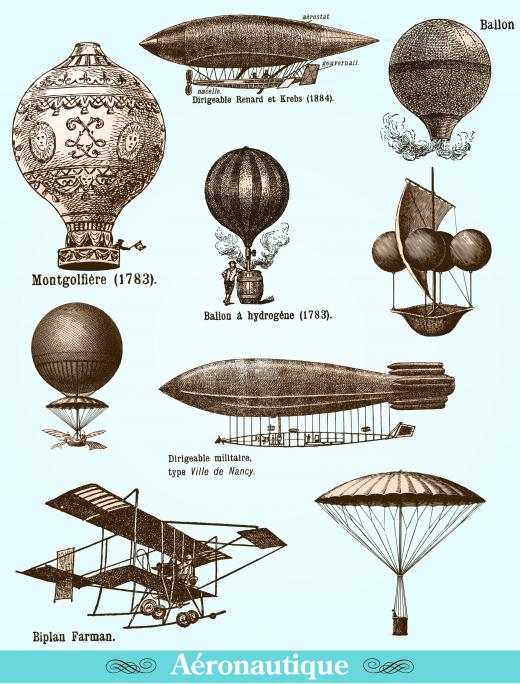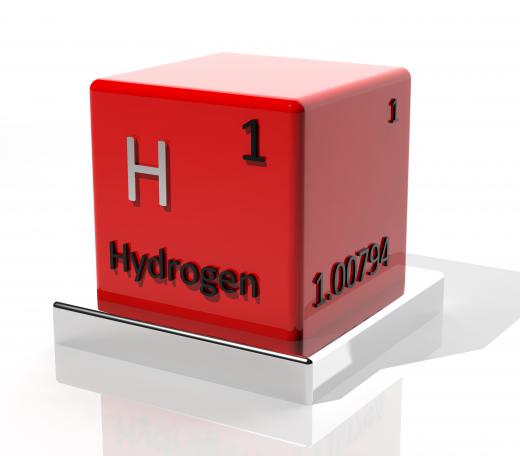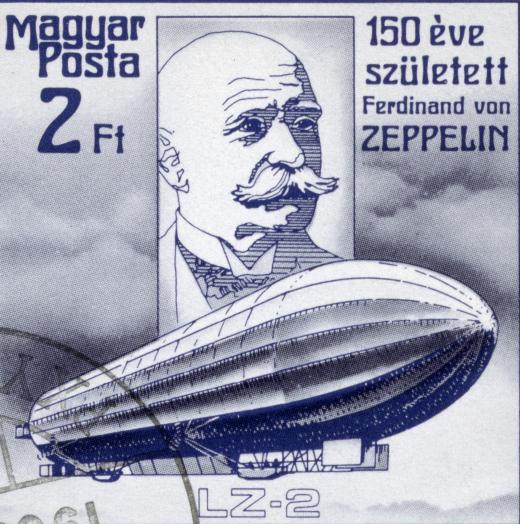What are Some Uses of Hydrogen?
 Michael Anissimov
Michael Anissimov
Hydrogen is the lightest element on the periodic table and has been used for a variety of purposes. Petroleum and chemical companies use it to access and refine crude oil and in the creation of commercial products such as margarine. At one time, companies used it to elevate blimps and airships, but its combustible nature has led to disfavor in this application. Different forms of hydrogen have been utilized for a wide range of scientific applications, and it may be a source for clean or low-emission power in the future.
Commercial and Consumer Uses

Companies in the petroleum and chemical industries often use hydrogen in significant quantities. In a petrochemical plant, it can be used for hydrodesulfurization, which removes sulfur from other natural gas, and hydrocracking, a process by which complex chemicals are broken down into simpler components. Food companies often use it to hydrogenate oils or fats, which permits the production of margarine from liquid vegetable oil. Chemists also use it to produce methanol and hydrochloric acid, both of which can be used commercially or as part of consumer products.
Past Use in Aviation

In the early 20th century, hydrogen was used as a lifting gas for airships. This ended in 1937, however, when the Hindenburg disaster effectively brought an end to airships for commercial travel. While the exact cause of the disaster remains unknown, some individuals blamed it on the fuel. Modern zeppelins and blimps use helium or heated air.
Applications in Science and Manufacturing

Hydrogen also has applications in physics and engineering. It is used as a shielding gas for welding, isolating the site of the weld from atmospheric gases such as oxygen and nitrogen. Some companies use it for cooling rotors in electrical power generators because of its high thermal conductivity. In its liquid form, it is colder than 14° Kelvin (K), so scientists have used it for research in cryogenics and superconductivity.

Hydrogen's isotopes, especially deuterium, are used in nuclear reactors. Deuterium can be used as a neutron moderator for fission reactions, in which an atom is split, or a fuel for fusion reactions, in which atoms are combined. Tritium, another isotope, acts as a radiation source in luminous paints and is a component in some bombs.
Clean Fuel and Power

In the early 21st Century, using hydrogen as a clean fuel became an increasingly attractive prospect. It is so light, however, that all atmospheric hydrogen has evaporated into space, which means it needs to be created artificially. The environmentally friendly nature of using it to create fuel cells was somewhat questionable, since large quantities of fossil fuels may be consumed to generate it. As technology has improved, new methods for creating these fuel cells have been developed that make them more practical and "cleaner" than directly using fossil fuels.
AS FEATURED ON:
AS FEATURED ON:















Discussion Comments
This is great, but what is it used in every day, like what foods, and stuff kids like us will know about?
Great info, but what are the comparisons between the physical and chemical properties of water and hydrogen?
@anon175581: Because it has the same electron shell, or the same number of electrons in its outer shell as the metals in its column. But it is usually taken away from the left side to show that it is a non-metal.
that's is very interesting. would like to see the instructions of how its used.
why is that hydrogen is the only non-metal on the metal side of the periodic table?
what was hydrogen used for in the 1800s?
you cannot see, smell or taste hydrogen.
Great, except I have a little bit of an issue with the last comment.
The "California Cuel Cell Partnership" has calculated that even using Hydrogen from methane for transportation, we could still reduce our greenhouse gas emissions by 55 percent. (This is using fuel cells as the electrical conversion device.)
I would like to see all hydrogen produced from carbon free or carbon neutral sources, but even using fossil fuels in a more effective, 'cleaner' way, we can reduce harmful gas emissions by half.
Last statement was not necessarily true. one can produce hydrogen from water, which is obviously not a fossil fuel.
Awesome site. Great work!
how does hydrogen look?
i love your site. it's great.
All very true, except the concluding statement.
In order to balance out demand for electricity, many countries are looking at storage of electrolyser-generated hydrogen along with wind, PV and hydro-electric power plants. In this way, excess and otherwise wasted energy can be turned into usable combustible gas for feeding into the gas grid, or refueling hydrogen-powered internal combustion engined vehicles.
This is of considerable interest to far-flung communities such as may be found in the Orkneys, etc., and makes sense of many alternative energy generation systems that would otherwise fail to meet their optimum benefit to society.
Post your comments